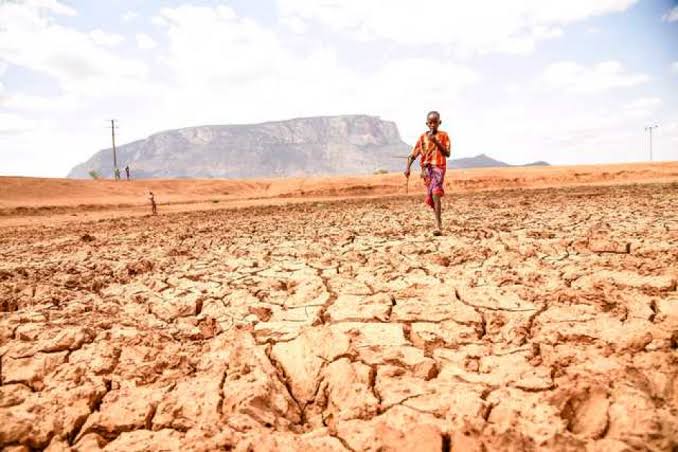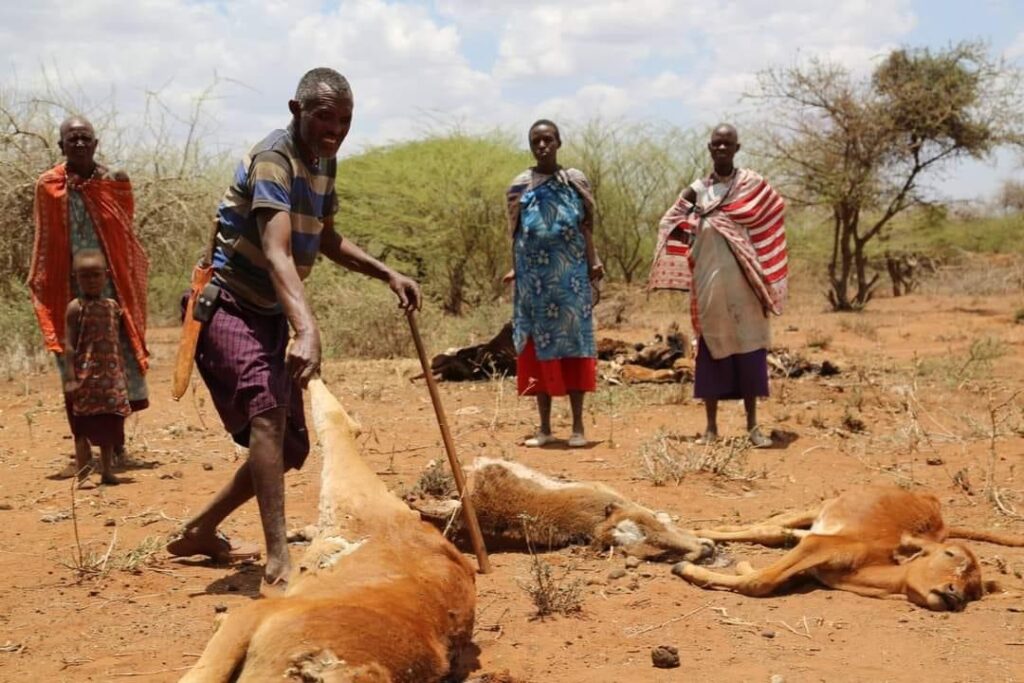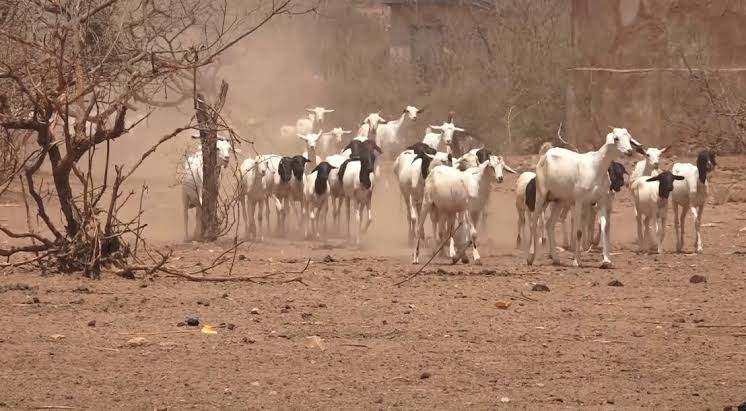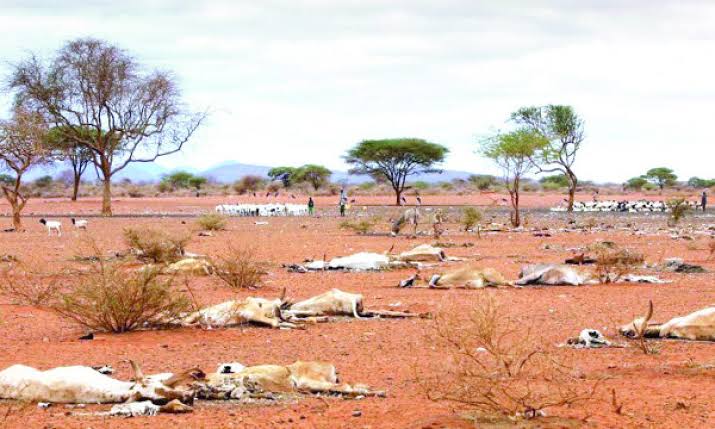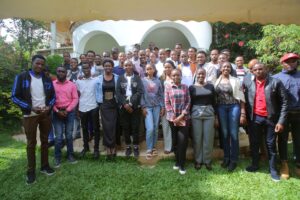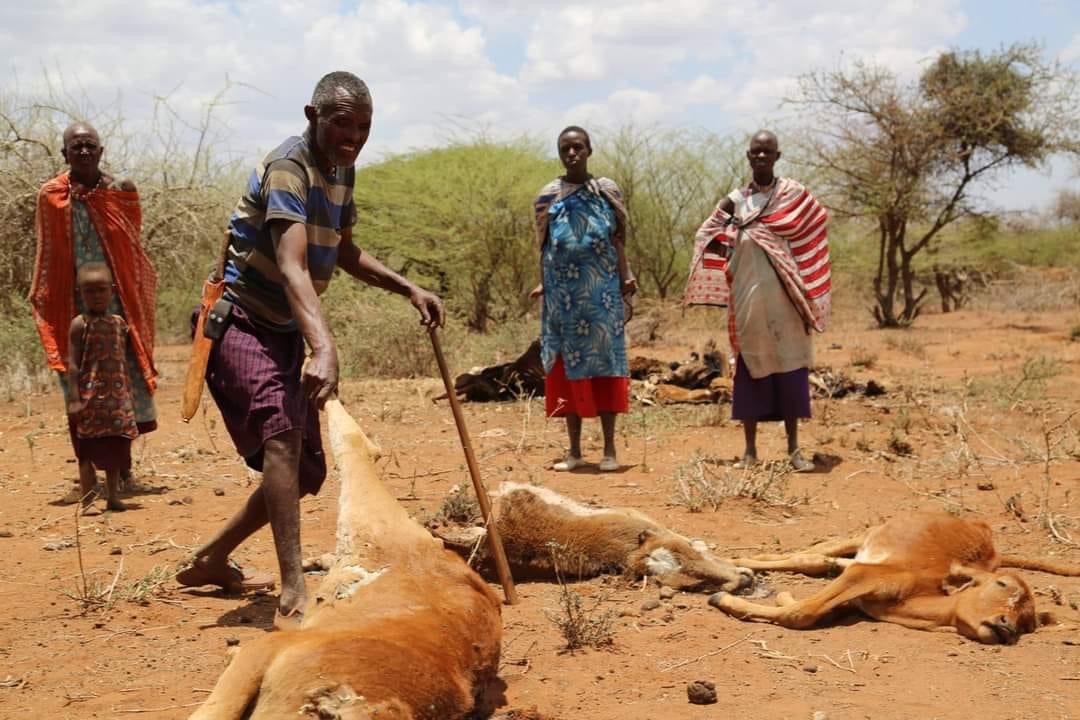By Tajeu Shadrack Ole Nkapaapa.
Climate change refers to significant changes in precipitation, global temperature, wind patterns and other measure of climate that occur over several decades or for longer periods of time. The residents of Kajiado County mostly the crop farmers and pastoralists have been affected with this climate hence their lives becoming more difficult than the previous years. For decades now, severe droughts have consistently been the main agricultural and pastoral challenge in the region, which has resulted to a huge reduction in the available water and pasture for the animals. It has caused livestock emaciation, conflicts between agro-pastoralist, a big loss in crop farming and escalated human-wildlife conflicts. There has been a tendency of long droughts in Kajiado and to mention a few, the most recent severe drought that has seen the region in three consecutive years without rainfall (2020, 2021 and 2022) a situation that was lasted 40 years ago. The drought resulted in failure of crop farming and a drastic decline in household milk production a worst situation that went down to less than a half litre of milk per day which has seen many households reducing frequency of meals and even some sleep without having anything to put on table.
Although the drought is said to have affected the whole region in the horn of Africa, Kajiado is among the most affected county in Kenya. Kajiado is predominantly a semi-arid area whereby crop farming and livestock keeping are the main economic activities. Crop farming is mainly done in the southern and western parts of the county along rivers and springs. It’s mostly done in Oloitoktok (Ilkisonko) Kajiado South and IlkeekOnyokie residents in Kajiado West. In the past years’ agriculture in Oloitoktok, southern part of Kajiado used to employ nearly 75 percent of the total population and provided almost 17 percent of the County’s food requirement. The frequent severe droughts led to triggered food shortage in the county.
In the three years drought the farmers have reported nearly 90 percent of crops failure and a 70 percent in livestock losses. TheWorld Meteorological Organizaion termed the drought as the ‘longest drought to hit the Greater Horn of Africa in 40 years. As of the end of February last year, Kajiado was listed among the 9 counties classified in the ‘Alarm’ drought phase. According to the National Drought Management Authority report (NDMA), Kajiado County lost 38.8% of its livestock population, 252,592 out of 652,856 between September and November 2022 alone. This was largely experienced in the larger northern and southern Matapato, Kajiado central and Iloodokilani, Kajiado west respectively.
The higher illiteracy rates and poverty levels among the farmers and pastoralists has further compounded the effects of climate and variability, with 30 percent of the population living below the poverty line. This has slowed down recovery from climate events and constraints options for livelihood diversification. Another big gap identified is lack of forum which is suppose unite all participants in agriculture for a joint activity planning
The severe droughts are as a result of the global climate, which is the most serious challenge of Kajiado County in achieving its development goals under the Vision 2030 of Kenya. In the previous regime with the big four agenda by the former president Uhuru Kenyatta, food security was at the top of the list having Kajiado as one of the mention counties that is struggling with food insecurity. During the last few years, climate change has been a common challenge in Kajiado and it has risked the livelihood of the people. It has experienced a trend of devastating droughts since the 1900’s. The severity of the droughts has increased over time up to (2-3) years with no rain at all. There is a history of severe droughts beginning from 2000, whereby droughts have consistently affected the region, in the year 2000, 2003, 2004, 2007, 2009, 2011 and the worst drought of 2020-2022.
In the last 20 years, the trend of the droughts has resulted to drying up of the major water sources in the county. It increased mortality rate of the animals, crop failure, human-wildlife conflicts and school dropouts and these factors made the county to depend more on relief food from the government, Non-governmental Organizations and other donors from within and without. The brief data on the effects of these dry seasons; the deaths of animals (cows, sheep and goats) in the previous years like between 1999-2001, more than 11,000 livestock died while on transit to Mount Kenya in search of water and pasture as explained by one of the farmers in an interview with a local radio station.
In the 2009 severe drought estimation was that nearly 30,000 families were affected and over 130,000 livestock died according to Loserian a pastoralist in Matapato section. “During the 2009 drought, 187 of my animals died at ‘Manyara’ in Tanzania, where we relocated in search of pasture.” Loseriansaid. The effects of these severe droughts have dragged Kajiado slow on matters development. It is highly contributed by the highest percentage of people who cannot afford food and basics for life. After the devolved systems of government, every financial year the County government has prioritize bursary allocation to the many needy students who cannot afford basic education and unprocedural employment having a very huge wage bill that is not affordable leaving development agenda on the tail end in attempt to change the lives of people.
It is high time that the people require education about the climate and its changes. According to the Ministry of Environment and Forestry, the change in weather patterns experienced today is highly contributed by human activities such as deforestation. People have been illegally cutting down treesfor charcoal and no replacement is made, therefore Kenya forest has consistently been reduced to 8.8 percent which has been reported by Kenya Forest Service to have increased to 12.13 percent this year 2023, with a vision to achieve 30 percent by 2032. It’s a good plan for the government to provide millions of seedlings to plant more trees and hire more Kenya Forest Service Officers to ensure that the forests are conserved for future generations. The government of Kenya also needs to tighten their belts in dealing with the effects. In the mid of this year, September 2023, the Meteorogical department predicted El-nino rains in the country which is currently raining heavily in many parts of the country. There is need for the county government in collaboration with the national government and development partners to come up with a well-equipped system of harvesting rain water for consumption during dry seasons. In Kajiado central there are millions of litres of running water in river Olesonkoyo in MailTisa and River Olkeriai in Mashuuru. According to experts, if water storage dams are constructed to store the water, it will be sufficient to serve Kajiado Central in the whole dry season.
